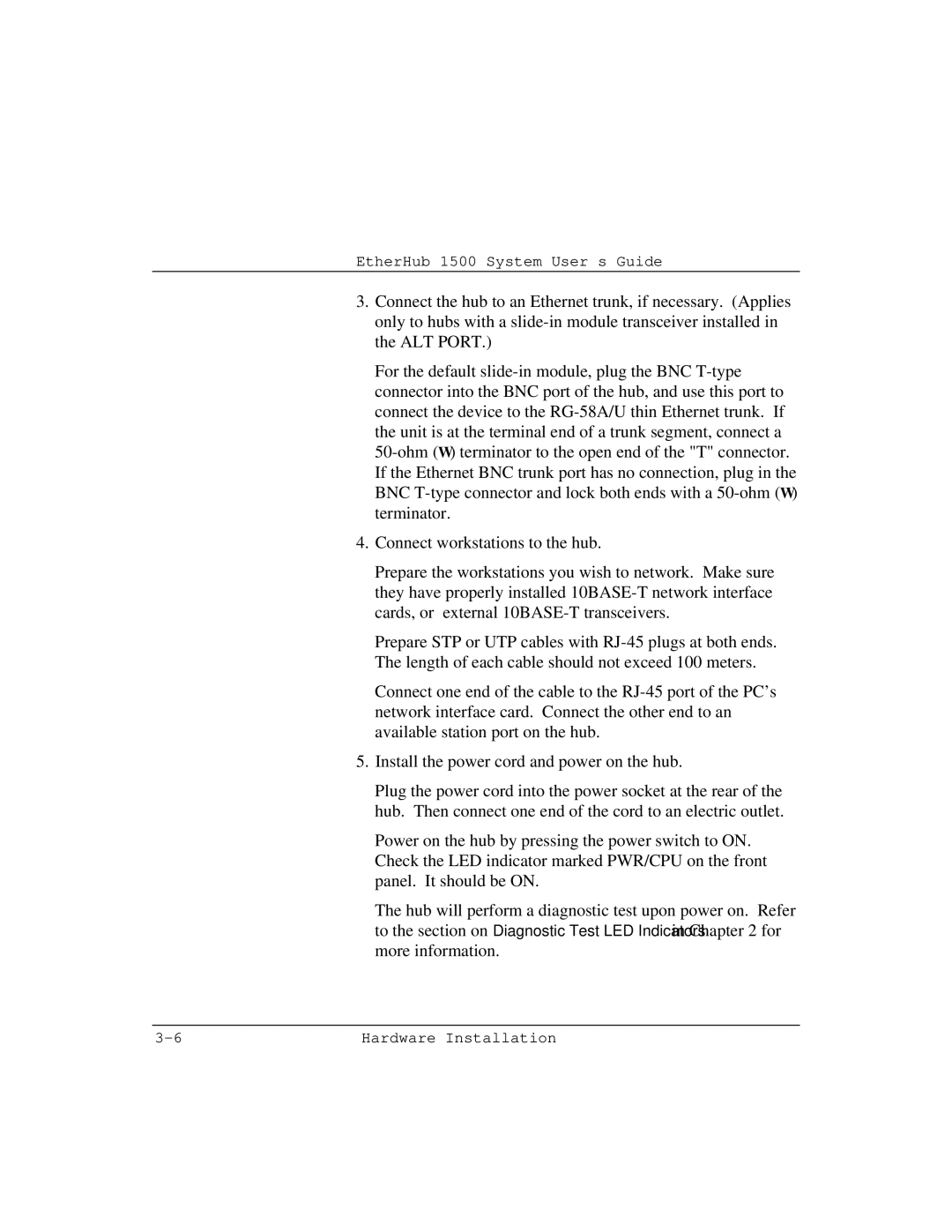
EtherHub 1500 System User’s Guide
3.Connect the hub to an Ethernet trunk, if necessary. (Applies only to hubs with a
For the default
the unit is at the terminal end of a trunk segment, connect a
If the Ethernet BNC trunk port has no connection, plug in the BNC
terminator.
4.Connect workstations to the hub.
Prepare the workstations you wish to network. Make sure they have properly installed
Prepare STP or UTP cables with
Connect one end of the cable to the
5.Install the power cord and power on the hub.
Plug the power cord into the power socket at the rear of the hub. Then connect one end of the cord to an electric outlet.
Power on the hub by pressing the power switch to ON. Check the LED indicator marked PWR/CPU on the front panel. It should be ON.
The hub will perform a diagnostic test upon power on. Refer to the section on Diagnostic Test LED Indicators in Chapter 2 for more information.
Hardware Installation |
